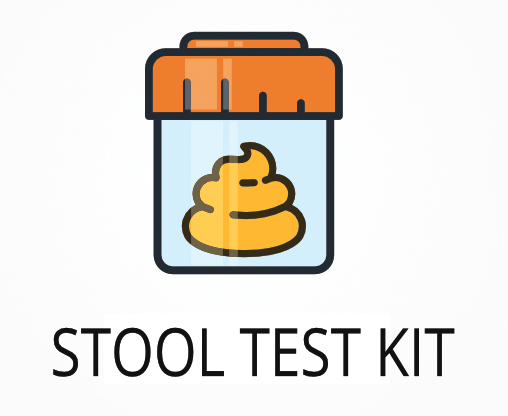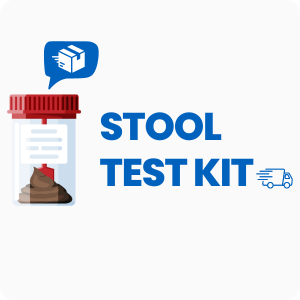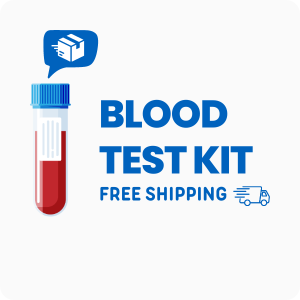Ordering the Comprehensive Digestive Stool Test | Europe
Ordering the Comprehensive Digestive Stool Test | Europe helps identify specific digestive imbalances, such as bacterial overgrowth, yeast, or issues with fat absorption, that may be causing symptoms like bloating, diarrhea, or constipation. Interestingly, this test can also detect hidden blood in the stool, which may not be visible but can signal inflammation or other digestive concerns.
When ordering this test, you gain access to:
- Detailed analysis of beneficial and imbalanced gut bacteria
- Detection of yeast, parasites, and harmful bacteria
- Assessment of digestive enzyme function and fat breakdown
- Measurement of inflammation markers, including faecal lactoferrin
- Evaluation of short-chain fatty acids and gut pH balance
Who Should Consider Digestive and Gut Microbiome Analysis
People who have ongoing digestive discomfort, such as frequent bloating, loose stools, or unexplained abdominal pain, may benefit from this test. For example, someone who has tried changing their diet and using probiotics but still experiences unpredictable digestive symptoms could use this test to pinpoint the cause.
Other scenarios where ordering this test may be helpful include:
- Persistent constipation or diarrhea that does not improve with simple changes
- Unexplained fatigue or skin issues that may be linked to gut health
- Known food intolerances or sensitivities, such as gluten or lactose
- History of antibiotic use with ongoing digestive changes
- Unexpected weight changes that may be related to nutrient absorption
This test provides clear information about gut bacteria, inflammation, and digestion, which can help guide targeted changes in diet or supplements. Delaying this test may allow imbalances to continue, making it harder to address symptoms and restore normal digestion.
Preparing for Stool and Gut Flora Testing
Fasting is not required for this test, but you should follow the kit instructions for sample collection. Always go by any specific directions from your doctor or healthcare provider to make sure your sample is collected correctly and your results are as useful as possible.
Labs Included When Ordering Your Comprehensive Digestive Stool Test
| Test Name | Reference Range | What This Marker Means | Low and High Levels of Comprehensive Digestive Stool Test |
|---|---|---|---|
| Gut Flora and Bacteria | |||
| Beneficial flora (Bifidobacterium, E. coli, Lactobacillus) | Present | These bacteria help digest food, produce vitamins, and protect against harmful microbes. Their presence supports a balanced gut environment. | High levels mean overgrowth, which may cause gas or discomfort.
Low levels mean reduced protection and possible digestive upset. |
| Imbalanced and dysbiotic flora | Absent | Imbalanced flora means there are too many or too few certain bacteria, which can disrupt digestion and immune function. | High levels mean possible infection or inflammation.
Low levels mean a more balanced gut environment. |
| Bacteriology EIA (Campylobacter, Shiga-like Toxin E. coli) | Not detected | This checks for harmful bacteria that can cause diarrhea, cramps, or fever. Detection may require medical attention. | High levels mean infection is present.
Low levels mean no harmful bacteria detected. |
| Mycology (yeast and fungi) | Not detected | This measures yeast or fungal overgrowth, which can cause bloating, gas, or changes in stool. | High levels mean possible yeast overgrowth.
Low levels mean no yeast or fungi detected. |
| Anti-Microbial Sensitivities | N/A | Shows which prescription drugs or natural agents are effective against detected microbes, helping guide treatment choices. | High levels mean more options for treatment.
Low levels mean fewer effective agents available. |
| Digestive Function and Enzymes | |||
| Chymotrypsin | >6.0 U/g | Chymotrypsin is a digestive enzyme that breaks down proteins. It shows how well the pancreas is working. | High levels mean rapid transit or enzyme supplementation.
Low levels mean possible pancreatic insufficiency. |
| Meat fibers | Absent | Undigested meat fibers in stool suggest problems with protein digestion or enzyme function. | High levels mean poor protein digestion.
Low levels mean normal protein breakdown. |
| Vegetable fibers | Few | Vegetable fibers show how well plant foods are digested. Too many may mean fast transit or low enzyme activity. | High levels mean rapid transit or low fiber breakdown.
Low levels mean good digestion of plant foods. |
| Fat and Lipid Markers | |||
| Triglycerides | <1.0 g/100g | Triglycerides are fats found in stool if not digested well. High levels may mean fat malabsorption. | High levels mean poor fat digestion.
Low levels mean normal fat absorption. |
| Long chain fatty acids | <2.0 g/100g | These fats should be absorbed in the small intestine. High levels in stool suggest absorption problems. | High levels mean fat malabsorption.
Low levels mean normal fat digestion. |
| Cholesterol | <0.5 g/100g | Cholesterol in stool can show how well fats are digested and absorbed. High levels may point to digestive issues. | High levels mean poor fat absorption.
Low levels mean normal fat processing. |
| Phospholipids | <0.5 g/100g | Phospholipids are a type of fat. High levels in stool may mean the body is not absorbing fats well. | High levels mean fat malabsorption.
Low levels mean normal fat absorption. |
| Total faecal fat | <7.0 g/100g | This measures all types of fat in the stool. High levels can mean the body is not breaking down or absorbing fats properly. | High levels mean fat malabsorption.
Low levels mean normal fat digestion. |
| Inflammation and Immune Markers | |||
| Faecal lactoferrin | <7.25 μg/g | Lactoferrin is a protein that rises with gut inflammation. It helps show if there is irritation or infection in the digestive tract. | High levels mean active inflammation.
Low levels mean no significant inflammation. |
| Mucus | Absent | Mucus in stool can be a sign of irritation or inflammation in the gut lining. | High levels mean possible gut irritation.
Low levels mean no irritation detected. |
| Occult blood | Not detected | Occult blood is hidden blood in the stool. Its presence may signal inflammation, ulcers, or other digestive issues. | High levels mean possible bleeding in the gut.
Low levels mean no hidden blood detected. |
| Short-Chain Fatty Acids and pH | |||
| Putrefactive SCFAs | <0.5 mmol/g | Putrefactive short-chain fatty acids are produced by bacteria breaking down protein. High levels may mean too much protein fermentation. | High levels mean excess protein breakdown.
Low levels mean normal fermentation. |
| Beneficial SCFA | >1.0 mmol/g | Short-chain fatty acids, like butyrate, help feed gut cells and keep the lining healthy. They are made by good bacteria from fiber. | High levels mean good fiber fermentation.
Low levels mean less support for gut lining. |
| n-Butyrate | >0.5 mmol/g | Butyrate is a key short-chain fatty acid that supports gut lining and reduces inflammation. It is made by certain gut bacteria. | High levels mean strong gut support.
Low levels mean less protection for gut lining. |
| Acetate | 0.5–1.5 mmol/g | Acetate is a common short-chain fatty acid. It helps balance gut bacteria and supports energy for gut cells. | High levels mean increased fermentation.
Low levels mean less energy for gut cells. |
| Proprionate | 0.2–0.6 mmol/g | Proprionate is another short-chain fatty acid. It helps regulate gut bacteria and supports the immune system. | High levels mean more fermentation.
Low levels mean less support for immune function. |
| pH | 6.0–7.5 | Stool pH shows the balance of acids and bases in the gut. It can be affected by diet, bacteria, and digestion. | High levels mean more alkaline stool, possible low fiber intake.
Low levels mean more acidic stool, possible high fermentation. |
| Other Markers | |||
| beta-Glucuronidase | <4,000 U/g | This enzyme is made by gut bacteria. High levels may affect how the body processes toxins and hormones. | High levels mean possible toxin reabsorption.
Low levels mean less risk of toxin buildup. |
| Color | Brown | Normal stool color is brown. Changes in color can signal issues with bile, digestion, or bleeding. | High levels mean darker stool, possible bleeding.
Low levels mean pale stool, possible bile issue. |
Reference ranges may change slightly as labs update their methods and guidelines.
Comprehensive Digestive Stool Test FAQ
Is there Comprehensive Digestive Stool Test testing near me?
This is a home test kit, so you can collect your stool sample locally and send it to the lab using the provided instructions; check the draw location link at the top of the page. For those with ongoing digestive symptoms, being able to collect your sample at home means you don’t have to travel or wait for an appointment, making it easier to get answers quickly.
How do I interpret the test results?
While your treating physician should review your results, we also offer a one-on-one test results review with our clinical team to help you understand your report and next steps.
What is the cost of the test?
The price listed for this test includes standard shipping to you and return shipping to the lab; draw fees may apply. Ordering this test can help you identify the cause of symptoms like bloating or diarrhea, so you can address them sooner and feel better faster.
How often should I retest?
Retesting is usually recommended every 6 to 12 months, especially if you are making changes to your diet or treatment plan. Regular testing helps track progress and ensures that any new or ongoing digestive issues are addressed promptly.
How accurate is the test?
This test uses enzyme immunoassay (EIA), culture, and microscopy to detect bacteria, yeast, parasites, and other markers, with a specificity of 98% and sensitivity of 95%. TrueHealthLabs.com partners with CLIA-certified and CAP-certified laboratories to uphold rigorous testing standards for dependable results.
Important Notes
READ: These tests are available for European countries only.
Medical Review Board
Reviewed by Jeff Donohue M.D. from Body Logic and Brady Hurst DC, CCCN. Written by True Health Lab’s team of editorial health contributors.
Disclaimer: This information is for educational purposes only and not intended as medical advice. Consult your healthcare provider for personalized guidance.
Why Customers Trust True Health Labs - What People are saying
Also rated 4.6 out of 5 based on 3452 ShopperApproved reviews- See all TrueHealthLabs.com reviews.








